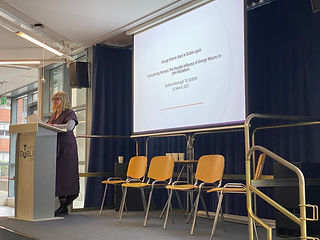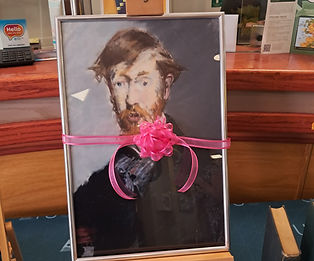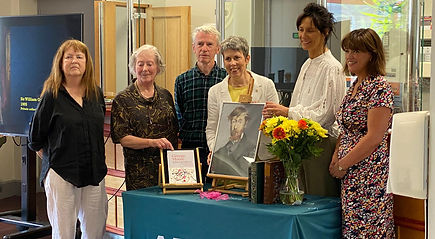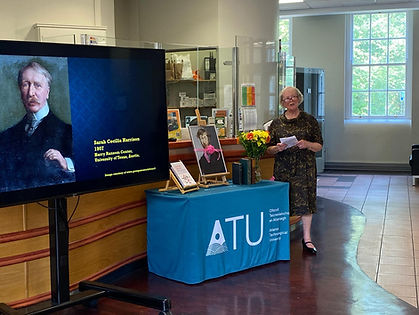
George Moore: Back in Dublin Again.
We were delighted to invite you to this event that, courtesy of the NCFIS and TU Dublin, took place in TU Dublin building at Aungier Street, and presented a most varied programme from then until closing before 5pm. Below is a selection of photos of the particiapants and audience from a successful and rewarding day.
Some photos from the launch for the 13th International George Moore Conference which took place at the Atlantic Technological University, Mayo, in Castlebar on 20 June 2025
Congratulations to Dr Elena Jaime de Pablos who has just won professorial status in Almeria. Elena is a GM stalwart who was involved with the very first International GM conference, has hosted two memorable GM conferences & continues to be a lively and cherished member of the association.
Felicidades Elena!
ONLINE COURSE AUTUMN 2025 - ESTHER WATERS
We have been contacted by the curators Elizabeth Gaskell’s House (https://elizabethgaskellhouse.co.uk/) to inform us that they are running an online course entitled ‘Feisty Females’. (https://elizabethgaskellhouse.co.uk/feisty-females/)
This very interesting exploration starts in early September - full details above. The four female protagonists being discussed are Elizabeth Bennet,( Pride and Prejudice) Shirley, (Shirley) Margaret Hale (North and South) and Esther (Esther Waters). A great chance to re visit classic literature and gain fresh insights into these four impressive women.

_JPEG.jpeg)
_JPEG.jpeg)

_JPEG.jpeg)












_JPEG.jpeg)
_JPEG.jpeg)
.jpg)

_JPEG.jpeg)






The George Moore Association seeks to promote study of George Moore’s works, to help young scholars, and to foster related literary tourism, cultural exchange, and new art products.
Registered charity (CH20202426); Charitable Tax Exemption (CHY 22425).
© 2023 by George Moore Association. Created with Wix.com, by Laura Caffrey and the GMA